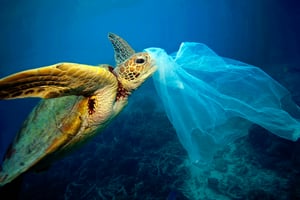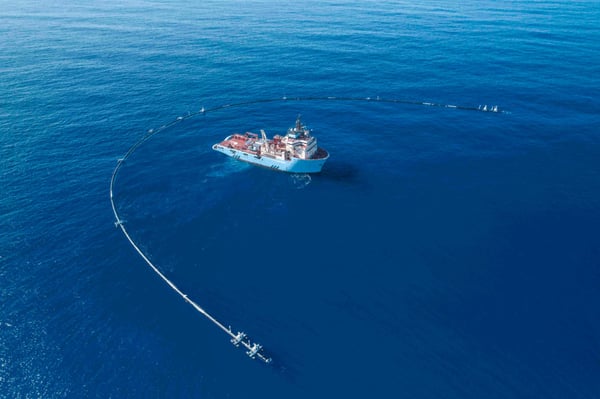“There is no such thing as ‘away.’ When we throw something away it must go somewhere.” -Annie Leonard
Plastics, or more scientifically understood as “polymers,” truly have an interesting relationship with humanity. This material can be molded into almost anything and was first created to be a benefit to the environment. There was an international call in the late 1800s to develop a substitute for ivory which was meant to stop the hunting of elephants and turtles, and plastic became the answer. What then transpired after over the last 100 or more years has been tremendous, yet unpredictable. Plastic is now one of, if not, the most widely used materials in the packaging and production of goods throughout the world, and it has improved and touched the lives of just about everyone around the globe.

The problem with plastic is that it’s made out of fossil fuels and designed to last hundreds of years. This seems counter intuitive because plastic is usually used for a brief period and is then disposed of. It is estimated that only 9% of the 8.3 billion metric tons of plastic ever produced has been recycled. The remaining, over 7.55 billion metric tons, can then be found in the landfill or the environment around us. As more individuals have become concerned about the environment, plastic has become a major focus of the movement to clean up our world. All the while, the growing population of humans has only increased the demand for its production, and the use is expected to double over the next 20 years.
An area of polymer pollution that has garnered the most media attention has been the world’s oceans. Images, like the one seen below, have been used by activists to help influence a call to action to help save wildlife and ensure cleaner waters. It is estimated that the amount of plastic in our oceans will outweigh all the fish by 2050 if nothing is done. This new increase in awareness has resulted in some positive solutions created to tackle this global issue.
The Great Pacific Garbage Patch is a specific area where these ocean plastics have gathered from the ways the Pacific Ocean’s currents move. Recently, this has been an area of positivity, as a 24 year old man founded “The Ocean Cleanup” and created a floating vessel to collect the plastic trash and properly recycle or dispose of it on land, all while not harming marine life. While faced with some initial concerns, this invention was just re-deployed to the ocean for waste collection in June. If the cleanup system is deemed reliable, 60 similar vessels will be deployed to tackle this patch of mostly plastic garbage.

Once the plastic makes its return to land and is turned into a recycled material for “post-consumer” use. For example, one of the most popular uses for recycled plastics has become an alternative material for textiles and apparel. Many brands, such as The North Face, Adidas, and Patagonia have developed lines made from these materials with the eco-conscious consumer in mind. However, while this can be less harmful to the environment than using virgin materials, these products are not without complications. When clothes with synthetic fabric are washed, micro-plastics from the textiles are released into the water and sent to wastewater treatment plants that aren’t designed to capture and filter out these tiny plastic particulates.
Micro-plastics are considered their own category of plastic waste because they are so hard to combat. These microscopic forms of plastic have made their way into the food chains across the globe and are found everywhere from seafood to beer. These have become a cause for concern because they can have severe negative health effects as they accumulate in our bodies. Many plastics, such as BPA, are known to be endocrine disruptors and can cause blood clots and liver damage when allowed into our bodies.
The global problem of plastics, however, is not without hope. There have been many bans implemented on single-use plastics, with special focus on straws and plastic bags. There has even been a “plastic eating bacteria” found by scientists who are hoping to test it further in order to help continue working towards solutions. While these solutions are still being brought to a scale that will address this global problem, we can all do our part to help. Learn about the many ways you can go plastic-free today, and ensure the plastics you do purchase can be recycled! Resources can be found at walkingmountains.org/sustainability.
Sources
http://www.forbesindia.com/article/sustainability-special/adidas-aims-to-eliminate-virgin-plastic-use-by-2024/53969/1https://www.designboom.com/design/ocean-cleanup-pacific-voyages-institute-06-25-2019/
https://theconversation.com/youre-eating-microplastics-in-ways-you-dont-even-realise-97649
https://www.scientificamerican.com/article/from-fish-to-humans-a-microplastic-invasion-may-be-taking-a-toll/
https://www.popsci.com/bacteria-enzyme-plastic-waste/
https://www.sciencehistory.org/the-history-and-future-of-plastics







